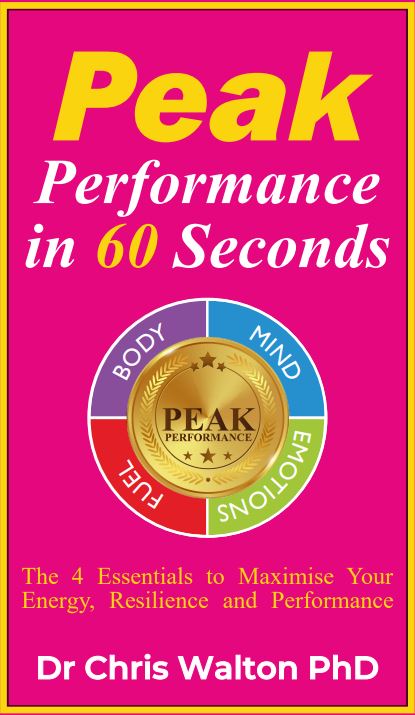Mindfulness has become a popular buzzword in recent years, with more and more people turning to this practice to help reduce stress and improve their overall well-being.
But what exactly is mindfulness, and how can you incorporate it into your daily routine? In this article, we’ll explore the top five tips for mindfulness that you can start using today.
Tip #1: Start with the basics. Mindfulness is all about being present in the moment and paying attention to what’s happening around you.
To get started, try focusing on your breath for a few minutes each day. Sit in a quiet place, close your eyes, and simply pay attention to the sensation of your breath moving in and out of your body.
Tip #2: Practice gratitude. One of the key benefits of mindfulness is that it helps you cultivate a sense of gratitude for the things in your life.
Take a few minutes each day to reflect on the things you’re thankful for, whether it’s a supportive friend or a beautiful sunset.
Tip #3: Be kind to yourself. Mindfulness is not about being perfect or achieving a certain level of success. It’s about being kind and compassionate to yourself, no matter what challenges you may be facing.
So be gentle with yourself, and remember that mindfulness is a journey, not a destination.
Understanding Mindfulness
What is Mindfulness?
Mindfulness is a state of active, open attention to the present moment. It involves being fully engaged in the current experience, without judgment or distraction. This can be achieved through various techniques such as meditation, breathing exercises, and yoga.
By focusing on the present moment, mindfulness can help individuals reduce stress, improve mental clarity, and enhance overall well-being.
Benefits of Mindfulness
There are numerous benefits to practicing mindfulness. Research has shown that mindfulness can help reduce symptoms of anxiety and depression, improve sleep quality, and lower levels of stress. Additionally, mindfulness can help individuals become more self-aware, which can lead to better decision-making and increased emotional intelligence.
By practicing mindfulness regularly, individuals can also improve their ability to focus and concentrate, leading to increased productivity and overall success.
Overall, mindfulness is a powerful tool that can help individuals improve their physical and mental health, enhance their relationships, and achieve greater success in their personal and professional lives.
Tip 1: Practice Daily Meditation
Meditation is a powerful tool for cultivating mindfulness. It involves focusing your attention on a particular object, such as your breath or a mantra. Regular meditation practice can help you develop greater awareness of your thoughts, emotions, and bodily sensations, and improve your ability to stay present in the moment.
Choosing a Meditation Technique
There are many different meditation techniques to choose from, each with its own benefits and challenges. Some popular techniques include:
- Breathing meditation: This involves focusing your attention on your breath as it moves in and out of your body. You can count your breaths, or simply observe them without judgment.
- Body scan meditation: This involves systematically scanning your body from head to toe, noticing any sensations or areas of tension.
- Loving-kindness meditation: This involves cultivating feelings of love, kindness, and compassion towards yourself and others.
- Mantra meditation: This involves repeating a word or phrase, such as “om” or “peace,” to help quiet your mind.
- Walking meditation: This involves walking slowly and mindfully, paying attention to your body and surroundings.
Experiment with different techniques to find one that resonates with you.
Creating a Meditation Schedule
To get the most out of your meditation practice, it’s important to make it a regular habit. Start by setting aside a specific time each day for meditation, such as first thing in the morning or before bed.
Aim to meditate for at least 5-10 minutes each session, gradually increasing the duration as you become more comfortable.
It can also be helpful to create a dedicated space for meditation, such as a quiet corner of your home or office. This can help signal to your brain that it’s time to relax and focus inward.
By making meditation a daily habit, you can cultivate greater mindfulness and reap the many benefits that come with it.
Here’s the section on Tip 2: Stay Present:
Tip 2: Stay Present
Staying present is a key aspect of mindfulness. It involves being fully engaged with the current moment, rather than worrying about the past or future.
By staying present, you can reduce stress and anxiety, improve your focus and concentration, and enhance your overall well-being.
There are many different techniques you can use to stay present. One simple exercise is to focus on your breath. Close your eyes and take a few deep breaths, feeling the air move in and out of your body.
As you breathe, try to focus all of your attention on your breath, letting go of any other thoughts or distractions.
Another technique is to use your senses to stay present. Take a moment to notice the sights, sounds, smells, and sensations around you.
Try to fully engage with your environment, without judging or analyzing what you are experiencing.
Finally, you can use mindfulness meditation to stay present. Find a quiet place where you won’t be disturbed, and sit in a comfortable position. Close your eyes and focus on your breath, allowing any thoughts or distractions to simply pass by without judgment.
With practice, you can learn to stay present and fully engaged with the current moment, no matter what challenges you may be facing.
Here’s the section you requested:
Tip 3: Cultivate Non-Judgmental Awareness
One of the fundamental principles of mindfulness is non-judgmental awareness. This involves observing thoughts, emotions, and sensations without labeling them as good or bad.
Instead, one simply notices them and allows them to pass without getting caught up in them.
According to a source, cultivating non-judgmental awareness can help individuals break free from habitual patterns of negative thinking and self-criticism.
By observing thoughts without judgment, individuals can gain greater clarity and perspective on their experiences.
One way to cultivate non-judgmental awareness is through mindfulness meditation. A source suggests practicing a 15-minute guided meditation that begins with focusing on something one doesn’t like about oneself.
This can help individuals become more aware of their negative self-talk and learn to observe it without judgment.
Another strategy for cultivating non-judgmental awareness is to practice suspending judgment and simply watch and feel whatever comes up.
This includes one’s own judging thoughts without acting on them in any way. Then, one can return to resting in the sensations of breathing, according to a source.
By cultivating non-judgmental awareness, individuals can develop a greater sense of self-awareness and acceptance, which can lead to a more positive and fulfilling life.
Here’s the section you requested:
Tip 4: Incorporate Mindfulness into Daily Activities
Incorporating mindfulness into daily activities can help cultivate a sense of calm and awareness throughout the day.
Here are two ways to incorporate mindfulness into daily activities:
Mindful Eating
Mindful eating is the practice of paying attention to the experience of eating, including the taste, texture, and smell of the food. It involves being present in the moment while eating and avoiding distractions such as watching TV or scrolling through social media.
Mindful eating can help individuals develop a healthier relationship with food and improve their overall well-being.
To practice mindful eating, individuals can:
- Take a few deep breaths before starting to eat
- Take small bites and chew slowly
- Pay attention to the flavors and textures of the food
- Put down utensils between bites
- Express gratitude for the food
Mindful Walking
Mindful walking is the practice of paying attention to the experience of walking, including the sensations of the feet touching the ground and the movement of the body.
It involves being present in the moment while walking and avoiding distractions such as listening to music or talking on the phone.
Mindful walking can help individuals reduce stress and improve their mood.
To practice mindful walking, individuals can:
- Choose a quiet and peaceful place to walk
- Walk at a slow and steady pace
- Pay attention to the sensations in the feet and legs
- Observe the surroundings without judgment
- Focus on the breath while walking
By incorporating mindfulness into daily activities such as eating and walking, individuals can develop a greater sense of awareness and improve their overall well-being.
Tip 5: Keep a Mindfulness Journal
Journaling is a powerful tool to help cultivate mindfulness. According to Positive Psychology, journaling can be an easier way to implement mindfulness than other techniques, such as meditation.
It allows individuals to reflect on their thoughts and emotions, which can help them become more aware of their mental state and improve their overall well-being.
To start a mindfulness journal, individuals can set aside a few minutes each day to write down their thoughts and feelings.
They can use prompts to guide their writing, such as those provided by Mindful.org. These prompts can help individuals explore their emotions, identify patterns in their thinking, and gain insight into their behavior.
Keeping a gratitude journal is another way to practice mindfulness through journaling. According to Mindful.org, focusing on what one is grateful for can help shift their perspective and improve their mood.
Individuals can write down three things they are grateful for each day, or reflect on a specific event or person they are grateful for.
Overall, keeping a mindfulness journal can be a valuable tool for individuals looking to cultivate mindfulness and improve their well-being.
By reflecting on their thoughts and emotions, individuals can gain insight into their mental state and develop a greater sense of self-awareness.
Here is your requested section:
Conclusion
Mindfulness is a practice that can help individuals reduce stress, increase focus, and improve overall well-being. By incorporating mindfulness into daily routines, individuals can develop a greater sense of awareness and presence in their lives. The five practical tips outlined in this article can help individuals cultivate mindfulness and build their “mindfulness muscles.”
First, focusing on physical sensations can be a helpful way to stay present in the moment. Simple activities such as washing hands or taking a walk can be opportunities to practice mindfulness. Second, setting aside a specific time each day for mindfulness practice can help make it a habit. Third, finding a group to practice mindfulness with can provide support and accountability. Fourth, incorporating mindfulness into daily activities such as eating or showering can help make it a natural part of life. Finally, being patient and forgiving oneself for lapses in practice is essential to developing a sustainable mindfulness practice.
By incorporating these tips into daily life, individuals can begin to experience the benefits of mindfulness. With practice, mindfulness can become a powerful tool for managing stress, improving focus, and increasing overall well-being.
One of the most powerful things you can do to improve your mindset, energy and resilience is The Gamma Mindset Technique. Sign Up Below to watch a cutting edge demonstration…

